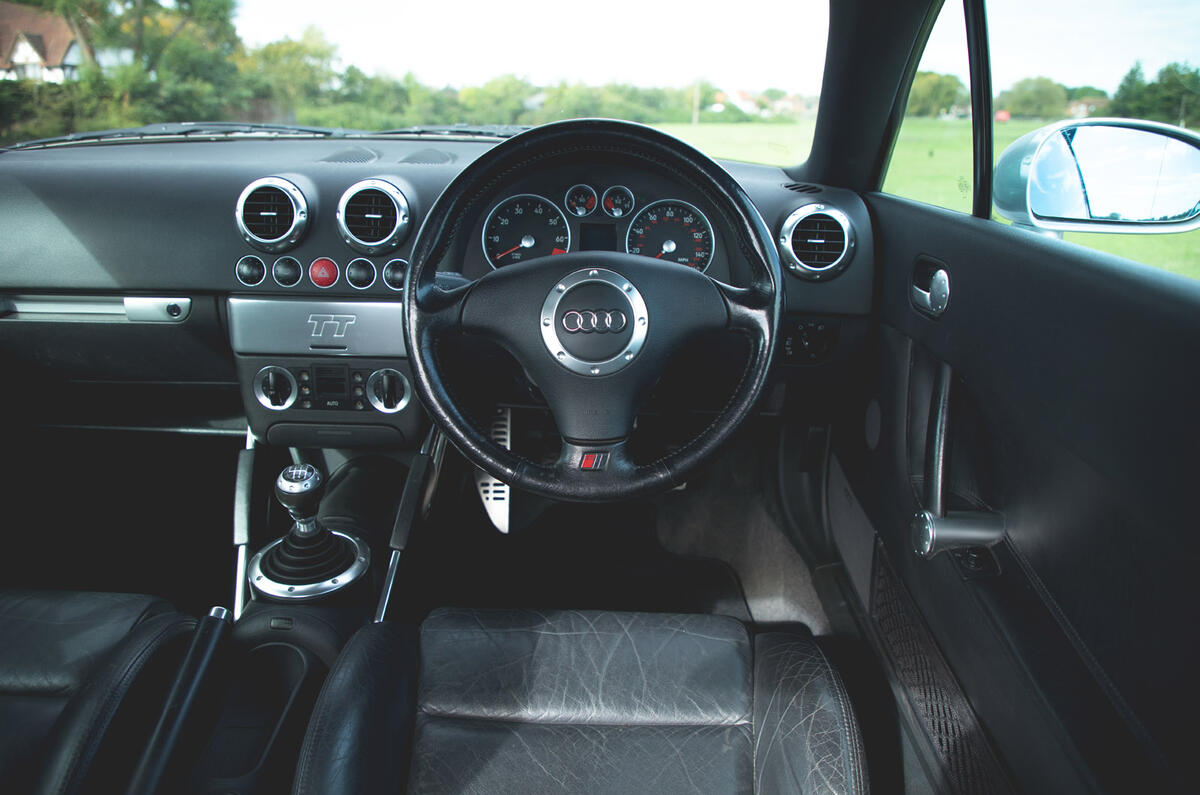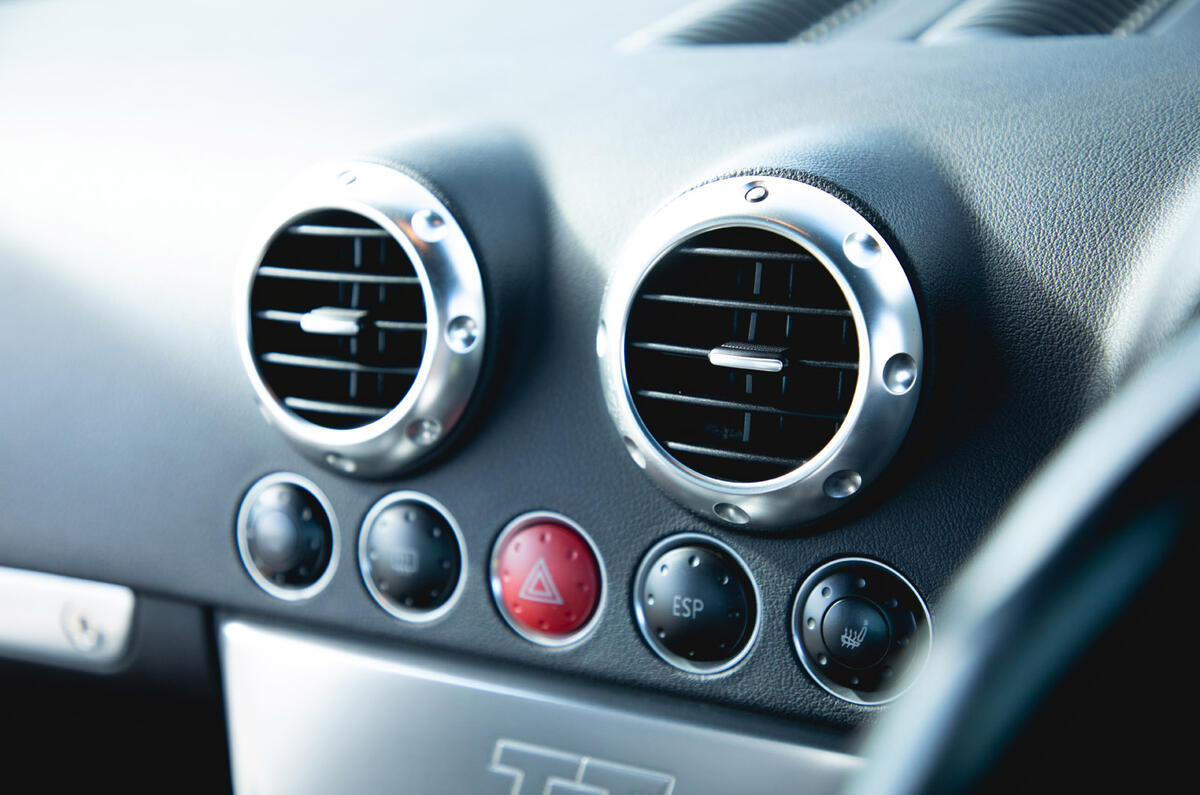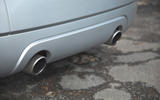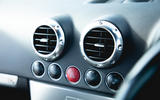You might think that it would be hard to find much in common between a car and a chair, but the original Audi TT and the outlandish ‘Wassily’ Model B3 are among the best-known manifestations of Bauhaus design, which is sufficient justification for a few straight comparisons, I reckon.
If we’re talking about value for money, the car has the chair licked comprehensively. In the early 1990s, an original B3 sold for nearly $31,000, which is more than £40,000 in today’s money. An original Audi TT can easily be bought for 10% of that – and it will have four chairs thrown in.
The TT is a Bauhaus-inspired design that went from pen to paper, from paper to show star, then from show star to production with mercifully few design changes. Such faithfulness to the designer’s original vision is very rare in this industry, and because the car wasn’t forced to conform to a corporate identity (like its 2006 Audi TT successor had to with its ‘goatee’ grille), it retains a timeless quality that marks it out as something special.
I pondered all of this as I spent a month with the Audi heritage fleet’s early-1999 example. The first thing that struck me was quite how small the original TT is compared with the current one. In fact, it’s actually both shorter and narrower than the current Volkswagen Polo.
![]()
Yet its cockpit is hardly what you would call cramped. True, the rear seats are useless for anyone with, say, a head or a pair of legs, but the front seats and the steering wheel have loads of adjustment for you to get comfortable. In some ways, you would think it were roomier inside the first TT than the latest one, such is the overwhelming nature of the latter’s extra airbags, safety beams and convenience features that help it pass stringent safety testing and satiate the modern consumer’s hunger for gadgets.
On the other hand, it’s this relative lack of electrickery and luxury that dates the TT the most: air conditioning and leather upholstery are about the only concessions to luxury you will find in here. You can at least fit an aftermarket Bluetooth head unit for streaming music and, thanks to a handy aluminium cover, hide it from view to avoid ruining the minimalist design of the interior.
It’s this economy of material usage that brings us back to Marcel Breuer’s 1926 chair and to Bauhaus design in general, because this movement was about the beauty of simplification. The Model B3 took inspiration from the huge club seats that you can find in country estates: these are very material-intensive, with lots of leather and stuffing to make them comfortable, whereas the B3 shuns all of this for a simple tubular steel frame and strips of woven eisengarn cloth strung between them in key places.
Bauhaus thought was also about celebrating industrial innovations. With Breuer’s chair, that can be seen in the frame. Previously, steel tubing had to have a welded seam, which would make the tubing too weak to be bent into complex shapes without collapsing in on itself. But thanks to advances in the manufacturing process, this issue was overcome.
Yes, sorry, more chair chat, but I bring this up because there’s a similar story surrounding the TT: improvements in how light lenses were formed meant far more complex shapes could be achieved.
![]()
That’s why the headlights and brake lights curve with the body shape yet also match perfectly with the panel gaps of the bumpers. Car designers are still at it today, thanks to improvements in LED technology, which allows them to create all sorts of lighting patterns. Had the TT gone with the pricey neon lighting it was originally intended to have, perhaps car lights could be entirely different today.
Another cost-saving measure Audi took was to base the TT on the same platform as the Mk4 Volkswagen Golf, which is a big factor in why the coupé remains a safer and more predictable proposition than many contemporary sports car rivals. True, those underpinnings don’t lend themselves overly to pre-dawn Sunday blasts, but in light of today’s synthesised and heavily assisted drivetrains, the TT won’t fail to elicit a smile on the right road, with the right treatment.
It’s quick, too, even in 222bhp four-pot 1.8-litre form (there was also a 247bhp 3.2-litre V6), doing 0-62mph in 6.6sec – similar to today’s 2.0-litre Mazda MX-5. And the old-school turbo lag heightens engagement by requiring you to frequently use the six-speed gearbox to keep it in the sweet spot.

Driving the TT is a refreshingly manual experience in all senses, and when you consider just how anodyne its successor seemed by comparison, it’s easier to forgive the blunter aspects of its dynamic character.
You can get a decent TT for around £2000 – about the same amount as you need for a reproduction Model B3. Really pukka TTs aren’t much more, at between £3000 and £4000, and given the everyday practicality and strong performance the model offers, that’s good value for money.
Will this famous piece of Bauhaus design become a valuable classic, like a certain chair? Although it’s not the most exciting car to drive, I’m sure it will, as we rapidly near the end of the line for petrol cars and demand evaporates for anything that isn’t ‘rugged’ or, at the sporting end of the spectrum, overtly aggressive.
Other sub-£5000 sports cars
2001 BMW Z3, £2600: Values of BMW’s pretty little roadster are only going to keep rising, but lower-powered examples remain within reach of the casual enthusiast. This later 114bhp 1.9-litre four-cylinder car might not set your pulse racing, but it is pleasingly rust-free and well presented.
2009 Volkswagen Scirocco, £3250: Like the original Audi TT, the reborn Volkswagen Scirocco is a rebodied Volkswagen Golf that performs far less vivaciously than its coupé styling would suggest. Even so, it’s an increasingly handsome proposition, and this turbo petrol car has been mapped to 300bhp.
2005 Mazda MX-5, £4495: The third-generation Mazda MX-5 doesn’t rust for fun like its predecessors, so you will find a healthy selection in the classifieds, and we would wager that you could enjoy one for a good number of years without losing too much money.
READ MORE
End of an era: Original 1998 Audi TT vs current Mk3





























Join the debate
Add your comment
It's a shock really how small the first series TT was,I saw one not so long ago and it struck me how compact it was,initially when the TT first came out I didn't really think that much of it,but over the years and that it's successors have got larger and more elaborate you realize what perfect proportions the first series TT had. It's rather like the first Golf that struck me as being a masterpiece at the time wonderful lines and styling plus it was also a fabulous example of packaging,but now seven models and almost half a century later it's become so big sometimes less is so much more